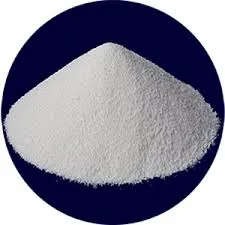- Afrikaans
- Albanian
- Amharic
- Arabic
- Armenian
- Azerbaijani
- Basque
- Belarusian
- Bengali
- Bosnian
- Bulgarian
- Catalan
- Cebuano
- Corsican
- Croatian
- Czech
- Danish
- Dutch
- English
- Esperanto
- Estonian
- Finnish
- French
- Frisian
- Galician
- Georgian
- German
- Greek
- Gujarati
- Haitian Creole
- hausa
- hawaiian
- Hebrew
- Hindi
- Miao
- Hungarian
- Icelandic
- igbo
- Indonesian
- irish
- Italian
- Japanese
- Javanese
- Kannada
- kazakh
- Khmer
- Rwandese
- Korean
- Kurdish
- Kyrgyz
- Lao
- Latin
- Latvian
- Lithuanian
- Luxembourgish
- Macedonian
- Malgashi
- Malay
- Malayalam
- Maltese
- Maori
- Marathi
- Mongolian
- Myanmar
- Nepali
- Norwegian
- Norwegian
- Occitan
- Pashto
- Persian
- Polish
- Portuguese
- Punjabi
- Romanian
- Russian
- Samoan
- Scottish Gaelic
- Serbian
- Sesotho
- Shona
- Sindhi
- Sinhala
- Slovak
- Slovenian
- Somali
- Spanish
- Sundanese
- Swahili
- Swedish
- Tagalog
- Tajik
- Tamil
- Tatar
- Telugu
- Thai
- Turkish
- Turkmen
- Ukrainian
- Urdu
- Uighur
- Uzbek
- Vietnamese
- Welsh
- Bantu
- Yiddish
- Yoruba
- Zulu
Nov . 06, 2024 10:38 Back to list
Efficacy of Ivermectin and Closantel Injection in Treating Parasitic Infections in Livestock
Ivermectin and Closantel Injection A Comprehensive Overview
Ivermectin and Closantel are two paramount veterinary drugs commonly used in the prevention and treatment of parasitic infections in livestock. Their efficacy in combating a range of parasites has made them crucial in veterinary medicine. This article will provide an in-depth look at both substances, their mechanisms of action, formulations, applications, and safety considerations.
Understanding Ivermectin
Ivermectin belongs to the macrocyclic lactone class of antiparasitic agents and is widely recognized for its broad-spectrum activity against many parasites, including nematodes (roundworms) and ectoparasites such as lice and mites. Ivermectin works by binding to specific chloride channels in the nervous system and muscle cells of parasites, leading to paralysis and death.
The use of Ivermectin spans various species of livestock, including cattle, sheep, goats, and pigs. The drug can be administered through multiple routes orally, topically, or via injection, with injectable formulations being preferable in certain scenarios due to their rapid onset of action and prolonged effect.
Exploring Closantel
Closantel is an anthelmintic drug effective primarily against trematodes (flukes) and certain nematodes. Its mechanism of action involves disrupting the energy metabolism of parasites, ultimately leading to their immobilization and death. Closantel is typically administered as an injection and is well-tolerated in various animal species, with a relatively low incidence of side effects.
Closantel is particularly effective in treating liver fluke infections, a common issue in grazing animals, which can lead to significant economic losses in the livestock industry. It has gained popularity due to its effectiveness and low environmental impact compared to some older veterinary drugs.
Combination Therapy The Benefits of Ivermectin and Closantel Injection
ivermectin closantel injection

The combination of Ivermectin and Closantel in a single injectable formulation provides a synergistic approach to managing parasitic infections in livestock. By targeting different types of parasites, this combined therapy broadens the spectrum of action, ensuring comprehensive coverage against both ectoparasites and endoparasites.
Veterinarians often recommend such combinations to enhance treatment efficiency and reduce the likelihood of resistance development. The simultaneous targeting of various parasites can also minimize the number of separate injections needed, promoting ease of use in farm management.
Safety and Efficacy
Both Ivermectin and Closantel have established safety profiles when used according to veterinary guidelines. However, care must be taken regarding dosages, as overdosing can lead to toxicity in animals. Specific species may exhibit heightened sensitivity; for instance, certain breeds of dogs are known to react adversely to Ivermectin.
Veterinarians routinely consider factors such as the animal's age, weight, and health status before treatment. Furthermore, understanding the withdrawal times is essential when using these drugs to ensure that meat and milk products remain safe for human consumption.
Future Perspectives
The ongoing research on Ivermectin and Closantel reflects the veterinary field's commitment to providing safe and effective treatments for livestock. Innovations in drug delivery systems and formulations are essential to improve efficacy and ease of administration. Additionally, understanding parasite resistance mechanisms will guide future chemical development, ensuring the sustainability of these critical drugs in veterinary practice.
In conclusion, the injection of Ivermectin and Closantel represents a significant advancement in the fight against parasitic infections in livestock. Their effectiveness, when used judiciously and safely, contributes to better animal health and productivity, ultimately benefiting the agricultural economy. The combination of these two potent drugs highlights the importance of integrated parasitic management strategies in veterinary medicine. As we advance, the collaboration between researchers and veterinarians will be essential to address the challenges posed by emerging parasitic resistance and maintaining the health of livestock.
-
Guide to Oxytetracycline Injection
NewsMar.27,2025
-
Guide to Colistin Sulphate
NewsMar.27,2025
-
Gentamicin Sulfate: Uses, Price, And Key Information
NewsMar.27,2025
-
Enrofloxacin Injection: Uses, Price, And Supplier Information
NewsMar.27,2025
-
Dexamethasone Sodium Phosphate Injection: Uses, Price, And Key Information
NewsMar.27,2025
-
Albendazole Tablet: Uses, Dosage, Cost, And Key Information
NewsMar.27,2025













